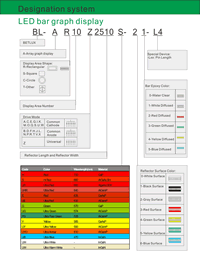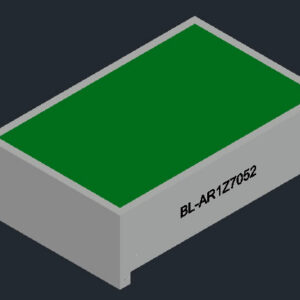Number of Bars
Series No:
Weight:(g/pcs)
Dimension:(mm)
Specification:
Inquiry
Description:
“Compact Precision: The LED Light Bar (Square, 1 Bar, 10.00×10.00mm) for Bargraph Display Applications”
Introduction
The LED light bar (square, 1 bar, 10.00×10.00mm) is a compact and efficient visual indicator widely used across electronic systems that demand clarity, precision, and durability. As a key component in a bargraph display, this module transforms electrical signals into visual representations, allowing quick and intuitive data interpretation.
The square bargraph LED offers both functional and aesthetic advantages — providing bright, uniform illumination in a small form factor. It is ideal for industrial panels, measuring equipment, and communication systems. Its durable structure and consistent brightness make it a reliable choice for engineers and manufacturers looking to enhance user interfaces with dependable LED light bars.
This article explores the technical features, applications, and real-world performance of the 10.00×10.00mm LED light bar, along with case studies and user testimonials that highlight its effectiveness in professional environments.
Features of the 10×10mm LED Light Bar
Designed with precision and durability, the bargraph display offers excellent optical uniformity and electrical efficiency. Here are its standout characteristics:
-
Compact Square Form (10×10mm):
The uniform square shape allows seamless integration in compact electronic assemblies, offering design flexibility for both single and multi-bar configurations. -
Bright and Uniform Illumination:
Each square bargraph LED delivers consistent brightness, making data visualization easy even under high ambient light. -
Long Lifespan:
Built using high-quality materials, the LED provides tens of thousands of operating hours with minimal degradation. -
Energy Efficient:
The LED light bar consumes very low power, ideal for battery-operated and energy-conscious systems. -
Color Options:
Available in standard red, green, yellow, blue, and dual-color variations for different indication needs or status displays. -
Rugged Epoxy Construction:
Resistant to shock, vibration, and temperature fluctuations, ensuring stable operation in industrial environments. -
Wide Viewing Angle:
The display offers optimal readability from multiple directions, improving accessibility and design flexibility. -
Customizable Configuration:
Supports parallel or stacked arrangements for multi-level bargraph display designs.
Applications of the Square Bargraph LED
The square bargraph LED finds widespread use in a variety of industries and product types. Its adaptability makes it a preferred display component for engineers and designers.
1. Industrial Control Systems
In control panels and machinery, the bargraph display acts as a real-time visual indicator of operational status, process levels, or fault warnings.
2. Audio Equipment
Audio mixers and amplifiers use LED bars to display sound levels dynamically, giving a professional and visually engaging output.
3. Power Supply Monitoring
The LED module indicates voltage, battery charge, or current flow levels in UPS units and power regulators.
4. Communication Equipment
Signal strength indicators and transmission monitors integrate square bargraph LEDs for quick signal status feedback.
5. Test and Measurement Instruments
The LED light bar is used in oscilloscopes, multimeters, and digital testers to display numerical or analog equivalents.
6. Consumer Electronics
From home audio systems to appliance control panels, these displays enhance both functionality and visual appeal.
7. Automotive Displays
Dashboard modules employ LED bars to represent fuel, temperature, and system diagnostics.
Benefits of the LED Light Bar (10×10mm)
The LED light bar offers a wide range of advantages that make it ideal for both professional and consumer-level applications:
-
Compact and Modular Design:
Fits easily into small enclosures, allowing for dense yet efficient layouts. -
High Visibility:
Ensures clear, bright output that remains readable in daylight or low-light conditions. -
Versatile Application:
Works with analog and digital control systems alike, making it highly adaptable. -
Energy Efficiency:
The bargraph LED operates at minimal current levels, reducing overall power consumption. -
Durability and Stability:
Resistant to environmental stress, providing consistent performance over time. -
Custom Display Flexibility:
Multiple LED bars can be combined for scalable visual indicators. -
Long Service Life:
Minimal maintenance is required due to its solid-state design and heat resistance.
Case Studies
Case Study 1 – Industrial Machinery Display (Germany)
A German industrial automation company integrated the 10×10mm LED light bar into its control consoles. The module displayed pressure and load data in a visual format, simplifying operation for field technicians. The bargraph display improved process monitoring efficiency by 30%, and reduced downtime due to faster diagnostics.
Case Study 2 – Audio Equipment (Japan)
A Japanese audio manufacturer used the square bargraph LED for equalizer panels on its amplifiers. The compact design allowed them to maintain a slim device profile while offering high brightness and visual sophistication. Customer satisfaction ratings increased notably after the integration of the LED system.
Case Study 3 – Renewable Energy Systems (USA)
An American solar inverter company adopted the LED light bar as a battery level indicator. With excellent visibility in both indoor and outdoor lighting, the LED bars helped users quickly assess system performance, reducing service calls by 25%.
User Testimonials
David R., Electronics Engineer (USA):
“The 10×10mm LED light bar is perfect for compact designs. It’s bright, durable, and incredibly easy to mount on standard PCBs.”
Sophia K., Product Manager (Germany):
“Our control panels use these bargraph LEDs extensively. Their uniform brightness and low power draw are unmatched.”
Kenji Y., Audio Technician (Japan):
“We’ve used this LED module in professional sound systems. The result—clear visibility, excellent color consistency, and minimal heat generation.”
Design and Integration Guidelines
To maximize the performance and lifespan of the bargraph display, engineers should consider the following:
-
Current Control:
Always use appropriate current-limiting resistors or driver ICs to prevent overcurrent damage. -
Color Selection:
Use distinct colors (e.g., green for safe, yellow for caution, red for warning) to enhance information clarity. -
Thermal Management:
Though efficient, LEDs produce some heat; adequate spacing and ventilation ensure longevity. -
Voltage Compatibility:
Match the LED forward voltage with driver circuit specifications. -
Uniform Brightness:
When using multiple LED bars, ensure consistent voltage across segments to maintain even brightness. -
Environmental Protection:
For outdoor or industrial installations, apply protective coatings against humidity or dust ingress.
Conclusion
The LED light bar (square, 1 bar, 10.00×10.00mm) represents a perfect harmony between precision, compactness, and performance. With its high brightness, uniform illumination, and rugged reliability, it is an essential component for engineers and manufacturers designing next-generation control interfaces and visual indicators.
Whether integrated into audio meters, industrial controllers, or energy systems, the bargraph display enhances both usability and design aesthetics. The square bargraph LED stands as a testament to modern LED innovation—delivering dependable illumination, energy efficiency, and unmatched longevity.
If your project demands accurate visual representation and lasting performance, the LED light bar is the ideal choice to elevate your product’s display capabilities.

Features
- Display Area Shape: Square, providing a distinct and clear illumination area.
- Display Area Number: Features one display area.
- Reflector Dimensions: Both the length and width are 10.00mm, making it compact and easy to integrate.
- Uniform Light Emitting Area: Ensures consistent and even lighting across the entire display.
- Low Current Operation: Energy-efficient, reducing electrical power consumption.
- Wide Viewing Angle: Allows the display to be easily visible from various viewing angles.
- Easily Mounted on P.C. Boards: Designed for straightforward integration into electronic systems.
- Flush Mountable: Can be installed to align seamlessly with the mounting surface, providing a neat appearance.
- Excellent On/Off Contrast: Offers clear visibility, enhancing the distinction between the illuminated and non-illuminated states.
- Can be Used with Panels and Legend Mounts: Versatile in terms of installation, suitable for various panel types.
- Categorized for Luminous Intensity: Ensures uniform brightness across different units.
- Different Colors in One Unit Available: Provides options for various color displays, enhancing customization.
- Standard: Black Face, White Segment: Offers a classic and easily readable appearance.
- RoHS Compliance: Manufactured in accordance with environmental and health safety standards.
Applications
- Indicator Lights: Ideal for use in compact spaces requiring clear indicator lights, such as in electronics or machinery.
- Control Panels: Suitable for small control panels in vehicles, industrial machinery, or consumer appliances.
- Compact Signal Lights: Applicable in settings where space-saving signal lights are needed.
- Instrumentation Displays: Useful for small-scale instrumentation where clear display is necessary.
- Consumer Electronics: Can be integrated into various consumer electronic devices for display or indication purposes.
- Safety and Emergency Equipment: Appropriate for compact safety devices requiring clear indicator lights.
- Information Displays: Effective in small-scale information displays in public areas or systems.


Electrical-optical characteristics:
Package configuration & Internal circuit diagram
Obtain 3D specification files
To examine all 3D specifications, save the files to your local drive and open them with your 3D application.
Lens colors in 3D files are solely for visual representation; consult the Datasheet for accurate lens type and color information.
In the event of a mismatch, the dimensions in the datasheet take precedence over the 3D specifications.

All dimensions are in millimeters(inches)
Tolerance is +-0.25(0.01″) unless otherwise note
Specifications are subject to change without notice.
Partno description:
Related Information
Applied for: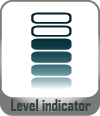
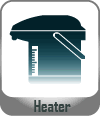
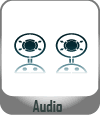
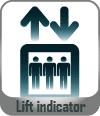

1. Application
The Seven Segment LED is widely applied for ordinary electronic equipment (such as office equipment,
communication equipment and household applications). Checking with BETLUX’s Sales in
advance for information on applications in which exceptional reliability is required, particularly
when the failure or malfunction of the LEDs may directly jeopardize life or health (such as in
aviation, transportation, traffic control equipment, medical and life support systems and safety
devices).
2. Storage
The storage ambient for the Seven Segment LED should not exceed 30℃ temperature or 70% relative humidity.
For extended storage out of their original packaging, it is recommended that the Seven Segment LEDs be stored
in a sealed container with appropriate desiccant, or in a desiccator with nitrogen ambient.
3. Cleaning
Avoid using any unspecified chemical solvent to clean LED . For example, Trichloroethylene, Chlorosen, Acetone, and Diflon S3MC.
Any cleaning method can only be taken under normal temperature in one minute or less if it is required.
Use water to clean the Seven Segment LED if necessary under room temperature
dry it immediately after that.
4.Forming
Any unsuitable stress applied to the epoxy may break bonding wires in LED
Any forming on lead pin must be done before soldering, not during or after soldering.
Avoid applying any stress to resin in order to prevent the epoxy fracture and break on bonding wire.
While forming, please use a tie bar cut or equivalent to hold or bend the pin.
2mm from the base of resin is the minimum distance for the place bending the lead pin.
Avoid bending the lead pin at the same point twice or more.

Soldering
When soldering, leave a minimum of 2mm clearance from the base of the base of the lens to the soldering point. Dipping the lens into the solder must be avoided.
Do not apply any external stress to the lead frame during soldering while the LED is at high temperature.
Recommended soldering conditions:
| IR Reflow Soldering (for SMD display) | Wave Soldering | Soldering Iron | |||
| Pre-Heat | 150-180°C | Pre-Heat | 100°C Max. | Temperature | 300°C Max. |
| Pre-Heat Time | 120sec Max. | Pre-Heat Time | 60sec Max. | ||
| Peak Temperature | 260°C Max. | SolderWave | 260°C Max. | Soldering Time | 3sec Max.(one time only) |
| Soldering Time | 10 sec Max. | Soldering Time | 5sec Max. | ||
Note: Excessive soldering temperature and/or time might result in deformation of the LED lens or failure of the LED
ESD(Electrostatic Discharge)
Static Electricity or power surge will damage the LED.
Suggestions to prevent ESD (Electrostatic Discharge):
n Use a conductive wrist band or anti-electrostatic glove when handling these LEDs
n All devices, equipment, and machinery must be properly grounded
n Work tables, storage racks, etc. should be properly grounded
n Use ion blower to neutralize the static charge which might have built up on surface of the LED’s
plastic lens as a result of friction between LEDs during storage and handling
ESD-damaged LEDs will exhibit abnormal characteristics such as high reverse leakage current,
low forward voltage, or “no light on” at low currents. To verify for ESD damage, check for “light on”
and Vf of the suspect LEDs at low currents.
The Vf of “good” LEDs should be>2.0V@0.1mA for InGaN product and >1.4V@0.1mA for AlInGaP
product.

LED dirve IC by Maxim Integrated
MAX6959 4½-Digit LED Display Driver
MAX6958 4½-Digit LED Display Driver
MAX6955 7-, 14-, 16-Segment LED Display Driver
MAX6956 LED Static Display Driver and I/O Port
MAX6954 7-, 14-, 16-Segment LED Display Driver
MAX6952 5 x 7 Matrix LED Display Driver
MAX6957 LED Static Display Driver and I/O Port
MAX6950 5-Digit LED Display Driver
MAX6951 8-Digit LED Display Driver
ICM7212 4-Digit LED Driver
ICM7212A 4-Digit LED Driver
ICM7212AM 4-Digit LED Driver
ICM7212M 4-Digit LED Driver
ICM7218A 8-Digit LED Driver
ICM7218B 8-Digit LED Driver
ICM7218C 8-Digit LED Driver
ICM7218D 8-Digit LED Driver
MAX7221 8-Digit LED Display Driver
MAX7219 8-Digit LED Display Driver
When selecting power for LED systems, it’s essential to understand several key parameters to ensure safe operation, longevity, and optimal performance. Here are some steps and considerations for LED power selection:
- Determine the Forward Voltage (Vf) of the LED(s):
Each LED has a forward voltage, which is the voltage at which the LED operates when the current is flowing through it. This value can typically be found in the LED’s datasheet.
- Determine the Forward Current (If) of the LED(s):
The forward current is the current at which the LED is designed to operate. Running an LED at higher than its rated current can reduce its lifespan and increase the heat it produces.
- Decide on the Configuration:
Series Configuration: When LEDs are connected in series, the forward voltages add up, but the current remains the same.
Parallel Configuration: When LEDs are connected in parallel, the forward voltage remains the same, but the currents add up. This configuration can be risky because if one LED fails or has a slightly lower forward voltage, it can cause the other LEDs to draw more current.
Calculate Total Power Requirements:
Power (W) = Total Forward Voltage (V) x Total Forward Current (A)
For example, if you have three LEDs connected in series, each with a forward voltage of 3V and a forward current of 20mA, the total power requirement would be:
Power = (3V + 3V + 3V) x 20mA = 9V x 0.02A = 0.18W
- Select an Appropriate Power Supply:
- Voltage Rating: The power supply voltage should match or slightly exceed the total forward voltage of your LED configuration.
- Current Rating: The power supply’s current rating should meet or exceed the total forward current of your LED configuration.
- Safety Margin: It’s a good practice to select a power supply that can provide at least 20% more power than your calculated requirement. This ensures the power supply isn’t operating at its maximum capacity, which can extend its life and ensure safer operation.
- Consider Additional Features:
- Dimming Capability: If you want to control the brightness of your LEDs, choose a power supply with dimming capabilities.
- Overcurrent and Overvoltage Protection: To protect your LEDs, select a power supply with built-in protection mechanisms.
- Thermal Management: Ensure that the power supply has adequate cooling, especially if it will be enclosed or in a location with limited airflow.
- Regulation and Efficiency:A power supply with good regulation will maintain a consistent voltage output despite variations in the load. High efficiency ensures minimal power is wasted as heat.
- Physical Size and Form Factor:Depending on where you plan to place the power supply, its size and shape may be critical factors.
In summary, when selecting power for LED systems, understanding your LED’s requirements and the configuration you plan to use is essential. Then, pick a power supply that meets those needs with some added safety margin, keeping in mind any additional features or constraints relevant to your project.
Here are some well-regarded brands in the industry:
- Mean Well: One of the most recognized brands in the LED power supply industry, Mean Well offers a wide range of products suitable for both indoor and outdoor applications. Their units often come with features like overcurrent protection, dimming capabilities, and high efficiency.
- Tridonic: A global leader in lighting technology, Tridonic offers LED drivers and power supplies that cater to various lighting solutions, from simple setups to advanced smart lighting systems.
- Philips Advance Xitanium: Philips is a well-known brand in the lighting industry, and their Xitanium series of LED drivers are known for reliability and performance. They cater to both indoor and outdoor LED applications.
- Osram: Another giant in the lighting industry, Osram offers a range of LED drivers and power supplies suitable for various applications, including architectural and street lighting.
- LIFUD: Specializing in LED drivers, LIFUD is known for its high-quality products that cater to both commercial and residential LED lighting solutions.
- MOSO: This brand offers a variety of LED drivers, especially for outdoor and industrial applications. Their products are known for durability and performance.
- TDK-Lambda: With a history in power electronics, TDK-Lambda offers a range of power supplies and LED drivers suitable for various applications, emphasizing reliability and advanced features.

